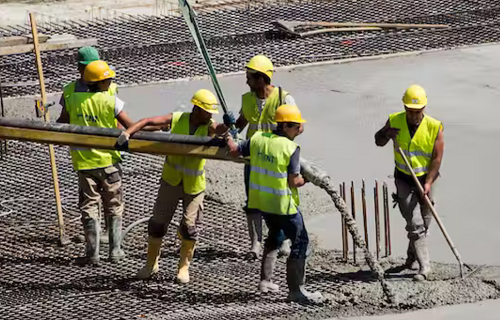 Sunday, September 29, 2024
Sunday, September 29, 2024  Sunday, September 29, 2024
Sunday, September 29, 2024 
Building materials and construction generate about 20% of global greenhouse gas emissions. Much of these emissions are due to the environmentally unfriendly process of producing ordinary Portland cement, which is widely used in construction materials such as concrete and mortar.
Portland cement production generates about 2.6 billion tonnes of carbon dioxide (CO₂) a year – more than 7% of annual global emissions. Cement emissions have doubled in the past 20 years. And over the next 40 years, construction is expected to double the building floor area worldwide.
Every tonne of cement produced also uses about 1.6 tonnes of raw materials, including fuels and other resources. Concrete production also uses large amounts of aggregate such as sand and gravel. This requires energy-intensive quarrying operations that deplete non-renewable natural resources – the world is running out of building sand.
The problems of emissions and resource depletion mean suitable substitutes for Portland cement and natural aggregate are required. Our research shows it is possible to develop more sustainable construction materials, reinforced using natural fibres. Industrial byproducts and waste materials can be used to replace cement binder and aggregate, reducing emissions, resource depletion and waste.
Recycling waste materials in construction can help reduce the environmental impacts of concrete and mortar production and the disposal of waste materials in landfills.
These materials include industrial byproducts (fly ash and blast furnace slag), waste glass and lead slag. Fly ash comes from coal-fired power stations. Blast furnace slag is a byproduct of iron and steel production.
A new type of eco-friendly material, geopolymer, has received significant attention as a replacement for conventional concrete. A geopolymer is a hard and durable human-made substance. Geopolymer production produces up to 90% less CO₂ emissions than conventional concrete.
The properties of waste glass and lead slag make them suitable for use in making geopolymer.
Keep reading on theconversation.com